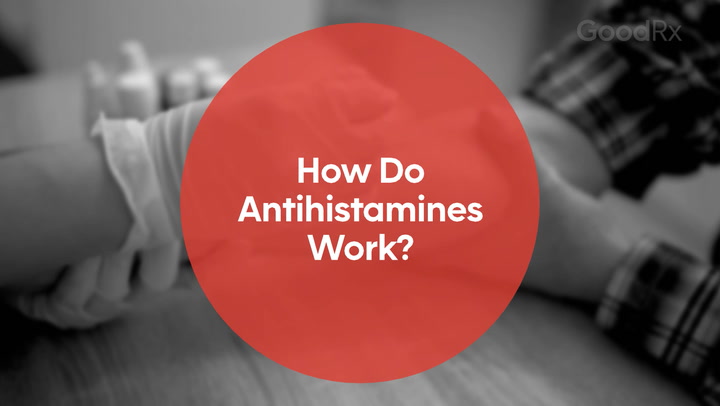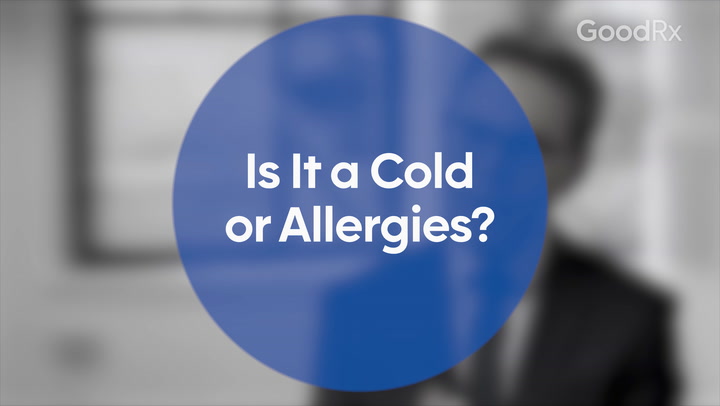
Steroids, Antihistamines, and Decongestants: Choosing the Best Nasal Spray for Allergies
Key takeaways:
Over-the-counter (OTC) steroid and antihistamine nasal sprays work best to treat allergy symptoms. Flonase Allergy Relief (fluticasone propionate), Nasacort Allergy 24 Hour (triamcinolone), and Astepro Allergy (azelastine) are common examples. They’re safe for both adults and children for daily use.
OTC decongestant nasal sprays, such as Afrin (oxymetazoline), provide fast, temporary relief of congestion. But they’re not the best choice for allergy symptoms. And they can only be used for up to 3 days at a time.
If you need to use an OTC steroid or antihistamine nasal spray long-term, it’s best to let your healthcare team know. They can make sure it’s safe, and decide if a prescription medication might be better.
Access savings on related medications
Table of contents
Sneezing? Runny nose? Watery eyes? Sounds like you’ve got allergies. And whether it’s due to pollen, dust, or pet dander, you might be looking for a nasal spray to help manage your allergy symptoms.
But with so many different nasal sprays to choose from, finding the right one can feel overwhelming. Let’s break down the types of over-the-counter (OTC) nasal sprays for allergies and find out which one works best.
What are the best OTC nasal sprays for allergies?
There are three popular types of OTC nasal sprays for allergy symptoms: corticosteroids (steroids), antihistamines, and decongestants.
Stay healthy with CVS
Shop the brands you trust at CVS. Whether it’s wellness or beauty, get what you need at great prices.

Nasal steroid sprays work best for treating severe or persistent allergy symptoms. They’re considered a first-choice treatment since they generally work better than oral antihistamines for congestion and reducing mucus. They can also help manage eye-related symptoms, such as itchy or watery eyes.
Antihistamine nasal sprays can also be an effective choice. They work faster than steroid sprays and also work better than oral antihistamines for treating nasal allergy symptoms, such as an itchy or runny nose. Experts recommend trying an antihistamine nasal spray first if your symptoms are mild or only happen every now and then.
Decongestant nasal sprays only treat congestion and should only be used for a very short time (up to 3 days). These should be reserved for when your congestion is severe.
Can you combine different nasal sprays?
Yes, you can combine different types of OTC nasal sprays. In fact, steroid nasal sprays and antihistamine sprays might work better together. But you’ll need to wait 15 minutes between each type of spray. And using more sprays increases your chances of side effects, such as nasal irritation.
Let’s look at each type of nasal spray in detail.
OTC steroid nasal sprays
Steroid nasal sprays work by calming your immune system’s response to the allergen that’s causing your symptoms. This helps to reduce swelling in your nasal passages and lessen the amount of mucus in your nose.
Comparing options: Learn about the differences between the types of allergy medications so you can choose the right one for you.
When allergy medications stop working: Learn why your allergy medicine isn’t working and what you can do to get relief.
Alternative treatments: Some natural supplements may also help treat allergy symptoms. Learn what the experts have to say about which supplements are worth a try.
OTC steroid nasal sprays include:
Flonase Allergy Relief (fluticasone propionate)
Flonase Senismist (fluticasone furoate) — a finer, gentler spray than regular Flonase
Nasonex 24HR Allergy (mometasone)
Nasacort Allergy 24HR (triamcinolone)
Rhinocort (budesonide)
When it comes to Flonase versus Rhinocort or the other products, they’re all considered first-choice options for allergies. But they’re approved for different ages and come in different types of sprays. So choose the one that works best for you.
Steroid nasal sprays work well, but you shouldn’t expect instant relief. You’ll need to use them daily, and it may take a few weeks to see their full effects. If you have seasonal allergies, starting a steroid nasal spray a week or two before allergy season may be better for managing your symptoms.
OTC antihistamine nasal sprays
Antihistamine nasal sprays work by blocking histamine. Histamine is released in response to allergens, and it causes allergy symptoms such as a runny nose and watery eyes. Blocking histamine helps lessen these symptoms.
Astepro Allergy (azelastine) is currently the only antihistamine nasal spray available OTC. It works quickly — within 15 minutes. And it can be used to both treat and prevent allergy symptoms.
OTC decongestant nasal sprays
Decongestant nasal sprays work by tightening blood vessels in your nose. They temporarily treat swollen nasal passages and congestion. They don’t treat other types of allergy symptoms, such as a runny nose or sneezing.
OTC decongestant nasal sprays are sold under many brand and generic names. Here are some of the best nasal sprays for congestion:
Afrin (oxymetazoline)
Sinex (oxymetazoline)
Zicam Sinus Relief (oxymetazoline)
Neo-Synephrine (phenylephrine)
Decongestant nasal sprays start working immediately. But there’s a catch — the effects are only temporary and typically fade within hours. You also shouldn’t use them for more than 3 days in a row. Otherwise, they can cause rebound congestion that can be tough to treat and take several months to go away.
OTC mast cell stabilizers
Another class of nasal sprays, called mast cell stabilizers, affect special allergy cells called mast cells. Like histamine, mast cells can cause allergy symptoms when they’re activated (turned on). Stabilizing mast cells stops them from turning on, helping to reduce allergy symptoms.
NasalCrom (cromolyn sodium) is an OTC mast cell stabilizer spray for allergies. It also both treats and prevents allergy symptoms, but it takes longer to work — about 1 to 2 weeks.
OTC saline nasal sprays
If you’re looking to avoid medication altogether, consider using saline nasal spray (Ocean). This can help keep your nasal passages moist. And it may help reduce irritation in the area. You can use it as often as you need it.
Pharmacist tip: Use saline nasal spray a few minutes before a steroid, antihistamine, or decongestant spray. This can help lower the risk of experiencing nosebleeds, a common side effect of these medicated nasal sprays.
What’s the best dose of OTC nasal sprays for allergies?
The dosages for OTC nasal sprays depend on the medication. Most include directions for adults and children. Be sure to read the OTC label carefully. You can also find separate children’s versions for products like Flonase, Nasonex, and Astepro.
Steroid Nasal Sprays
Medication | Dose range |
|---|---|
Fluticasone propionate (Flonase Allergy Relief, generics) | Adults and children ages 12 and older: 2 sprays in each nostril once daily for 1 week. Then 1-2 sprays in each nostril once daily for up to 6 months at a time Children ages 4-11: 1 spray in each nostril once daily for up to 2 months per year |
Fluticasone furoate (Flonase Sensimist) | Adults and children ages 12 and older: 2 sprays in each nostril once daily for 1 week; then 1-2 sprays in each nostril once daily for up to 6 months at a time Children ages 2-11: 1 spray in each nostril once daily for up to 2 months per year |
Triamcinolone (Nasacort Allergy 24HR, generics) | Adults and children ages 12 and older: 2 sprays in each nostril once daily; lower to 1 spray in each nostril once daily after symptoms improve for up to 6 months at a time Children ages 6-11: 1 spray in each nostril once daily; can increase to 2 sprays in each nostril once daily for a short time if needed for up to 2 months per year Children ages 2-5: 1 spray in each nostril once daily for up to 2 months per year |
Mometasone (Nasonex 24HR Allergy) | Adults and children ages 12 and older: 2 sprays in each nostril once daily for up to 6 months at a time Children ages 2-11: 1 spray in each nostril once daily for up to 2 months per year |
Budesonide (Rhinocort Allergy, generics) | Adults and children ages 12 and older: 2 sprays in each nostril once daily; lower to 1 spray in each nostril once daily after symptoms improve for up to 6 months at a time Children ages 6-11: 1 spray in each nostril once daily for up to 2 months per year; can increase to 2 sprays once daily in each nostril for a short time if needed |
Antihistamine / Mast Cell Stabilizer Nasal Sprays
Medication | Dose range |
|---|---|
Azelastine (Astepro Allergy) | Adults and children ages 12 and older: 2 sprays in each nostril once daily or 1-2 sprays every 12 hours Children ages 6-11: 1 spray in each nostril every 12 hours |
Cromolyn sodium (NasalCrom, generics) | Adults and children ages 2 and older: 1 spray in each nostril every 4-6 hours for up to 3 months |
Decongestant Nasal Sprays
Medication | Dose range |
|---|---|
Oxymetazoline (Afrin, Zicam Sinus Relief, Sinex, generics) | Adults and children ages 6 and older: 2-3 sprays in each nostril every 10-12 hours, as needed for up to 3 days |
Phenylephrine (Neo-synephrine, generics) | Adults and children ages 12 and older: 2-3 sprays in each nostril at least 4 hours apart, as needed for up to 3 days |
Can you use a nasal spray for allergies every day?
Yes, most nasal sprays work best if you use them every day. But if you or your child need a steroid or antihistamine nasal spray for more than a couple of months, it’s best to let your primary care provider know. Adults can use some nasal sprays longer, but it’s still best to loop in a healthcare professional.
Keep in mind that even though you can use a decongestant nasal spray every day, you shouldn’t use them for more than 3 days in a row. This could lead to rebound congestion.
What are common side effects of OTC nasal sprays?
The most common side effects of OTC nasal sprays are nasal irritation and a bad taste in your mouth. Sometimes nasal irritation can cause nosebleeds. Talk to your healthcare team if nosebleeds are severe or frequent. Aiming the spray away from the center of your nose can sometimes help.
When should you consider a prescription nasal spray for allergies?
There are some reasons your healthcare team may recommend a prescription nasal spray for you. These may include:
Cost. Not all OTC nasal sprays have generic options. And insurance may be more likely to cover a prescription nasal spray. You also have access to more savings, such as GoodRx coupons, copay savings cards, and patient assistance programs for prescription nasal sprays.
Combination sprays. If you need both a steroid and an antihistamine spray, prescription combination sprays, such as Dymista (azelastine / fluticasone) or Ryaltris (olopatadine / mometasone), are an option. These are often more convenient than using two separate OTC sprays.
For nasal polyps. Some prescription steroid nasal sprays treat nasal polyps (noncancerous growths inside the nose). OTC versions aren’t approved for this.
Treatment not working well enough. If you’ve tried OTC nasal sprays but they don’t seem to be working, a prescription option may be the next step.
Even if an OTC nasal spray is working, be sure to let your healthcare team know you’re using it. They may want to switch you to a prescription version depending on your symptoms and what’s causing them.
Frequently asked questions
It depends on which nasal spray you use. Decongestant nasal sprays should only be used for up to 3 days in a row. Longer use can cause rebound congestion. Steroid nasal sprays are safe for most people to use for up to 6 months (or up to 2 months for kids under age 12). After that, it’s good to check in with a healthcare professional. Antihistamine sprays and saline nasal sprays are typically safe for most people to use long term.
Yes, allergy nasal sprays are also helpful for postnasal drip. Steroid nasal sprays are the first-choice option for managing this symptom. But antihistamine, decongestant, and saline nasal sprays work well, too.
Yes, Nasacort is a good option for postnasal drip. It’s an OTC steroid nasal spray and is a recommended treatment for this symptom. But it may take a few days to feel its full effects. It works best if you use it consistently instead of only when symptoms happen.
Steroid and antihistamine nasal sprays are first-choice options for ragweed allergy symptoms. Oral antihistamines are another group of allergy medications that work well. If your ragweed allergies are severe or persistent, your healthcare team may suggest Ragwitek. This is an example of allergy immunotherapy. It helps train your immune system to react less strongly to ragweed pollen over time.
The bottom line
Over-the-counter steroid and antihistamine nasal sprays work best for treating allergy symptoms. Common examples include Flonase Allergy Relief (fluticasone propionate), Nasacort Allergy 24HR (triamcinolone), and Astepro Allergy (azelastine). They’re safe for both adults and children to use every day. Just be sure to follow the recommended dosage. And let your healthcare team know if you need to use these nasal sprays long term.
Decongestant nasal sprays can temporarily treat congestion, but they’re not preferred for allergies. They work fast, but should only be used for up to 3 days at a time.
Why trust our experts?



References
Akhouri, S., et al. (2023). Allergic rhinitis. StatPearls.
American Academy of Allergy, Asthma & Immunology. (2024). Mast cell activation syndrome (MCAS).
American Academy of Otolaryngic Allergy. (2019). You want me to spray what up my nose?
Bayer HealthCare. (2024). Afrin Allergy Sinus Nasal- oxymetazoline hydrochloride spray [package insert]. DailyMed.
Bayer HealthCare. (2024). Astepro Allergy- azelastine hcl spray, metered [package insert]. DailyMed.
BF Ascher and Co. (2023). Neo-Synephrine Regular- phenylephrine hydrochloride spray [package insert]. DailyMed.
Chattem. (2024). Nasacort Allergy 24HR- triamcinolone acetonide spray, metered [package insert]. DailyMed.
Church & Dwight Co. (2024). Zicam Intense Sinus Relief- oxymetazoline hydrochloride spray [package insert]. DailyMed.
Dykewicz, M. S., et al. (2020). Rhinitis 2020: A practice parameter update. The Journal of Allergy and Clinical Immunology.
Haleon US Holdings. (2024). Flonase Allergy Relief- fluticasone propionate spray, metered [package insert]. DailyMed.
Haleon US Holdings. (2024). Flonase Sensimist Allergy Relief- fluticasone furoate spray, metered [package insert]. DailyMed.
Hsu, S., et al. (2024). Onset of efficacy of azelastine hydrochloride 0.15% nasal spray for allergic rhinitis in an environmental exposure chamber. Annals of Allergy, Asthma & Immunology.
InformedHealth.org. (2023). Hay fever: Learn more – which medications can relieve hay fever? National Library of Medicine.
Johnson & Johnson. (2023). Rhinocort Allergy- budesonide spray, metered [package insert]. DailyMed.
L. Perrigo. (2024). Nasonex- mometasone furoate spray, metered [package insert]. DailyMed.
MedlinePlus. (2017). Histamine: The stuff allergies are made of.
Okano, M. (2009). Mechanisms and clinical implications of glucocorticosteroids in the treatment of allergic rhinitis. Clinical & Experimental Immunology.
Prestige Brands Holdings. (2023). Nasalcrom- cromolyn sodium spray, metered [package insert]. DailyMed.
Procter & Gamble Manufacturing. (2024). Vicks Sinex 12 Hour Decongestant Ultra Fine Mist- oxymetazoline hydrochloride spray [package insert]. DailyMed.
Seidman, M. D., et al. (2015). Clinical practice guidelines. Otolaryngology–Head and Neck Surgery.

























